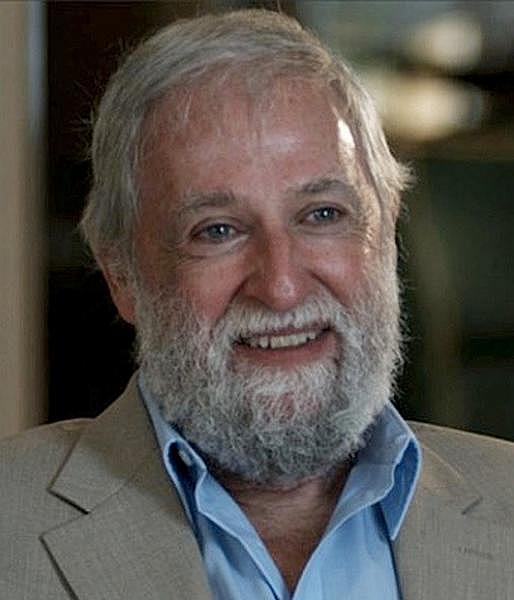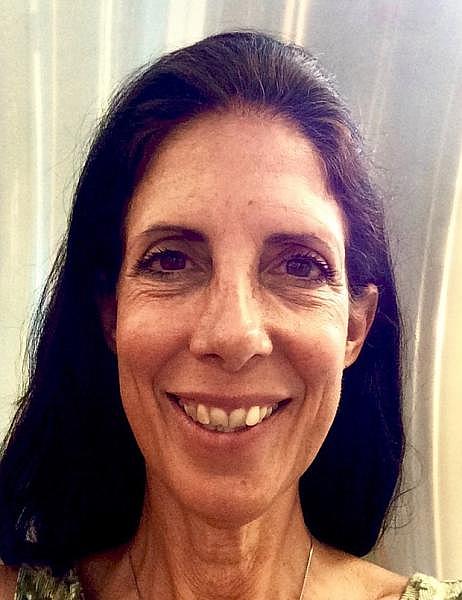Here are the best approaches to treating PTSD, experts and survivors say
This story is part of a series on Dec. 2, 2015, terrorist attack survivors’ recovery and California’s workers’ compensation system. The project was undertaken for the USC Center for Health Journalism’s California Fellowship.

Sally Cardinale, 36, of Redlands, takes a moment to reflect during a walk on Wednesday, July 19, 2017 at Prospect Park in Riverside, Ca. Cardinale, a survivor of the Dec. 2, 2015 terror attack in San Bernardino, says regular walks in nature have aided in her PTSD recovery. (Micah Escamilla, Press Enterprise, SCNG)
Terrorist attacks such as the Dec. 2, 2015, shooting that killed 14 people in San Bernardino lead to higher rates of post-traumatic stress that last longer — and impact more people — than other disasters, experts say.
A multi-pronged approach has been found to be most effective for tackling the complex, chronic condition.
Attack survivors can have a tougher time recovering from trauma, partly because they know the attackers were motivated by the desire to terrorize, rather than by mental illness.
By definition, such violence is meant to terrify and demoralize people — inflicting maximum damage on the human psyche to push a political, ideological or social objective.
“They’re not just coming after you and me. They’re coming after our country and everything we hold dear, and we take that in very deeply,” said trauma expert Frank Ochberg.
Frank Ochberg (Courtesy)
People’s post-traumatic stress reactions can fall along a continuum that includes distressing memories or flashbacks; avoidance; negative thoughts/feelings such as anger, helplessness and grief; hyper-vigilance and fear, which limits sleep, concentration and feeling secure.
Those symptoms must all occur for at least a month for someone to be diagnosed with post-traumatic stress disorder or PTSD – although there’s now a movement to change the diagnosis to post-traumatic stress injury to destigmatize what experts believe to be an injury to the nervous system.
“Some people think that having been challenged makes you stronger,” Ochberg said. “But if the challenge was too great and your whole alarm system goes off and can’t restore itself, that is detrimental.”
Mental health practitioners label the same kinds of reactions occurring within a month after trauma as shock or acute stress.
But with that diagnosis, someone must also be experiencing dissociation or detachment from reality that could include being numb; depersonalization, or having a sense that your thoughts and feelings aren’t real or yours; reduced awareness; feeling your surroundings aren’t real; and/or amnesia.
Resiliency building
Specialists now can recommend a range of tools to help trauma survivors.
Improving general well-being and resiliency can be a major help.
Ochberg recommends boosting physical health, laughter, connections with supportive people and spirituality, or whatever gives life deeper meaning.
There are times a trauma survivor won’t feel like laughing, but watching movies, reading books or seeing stand-up comedy can gradually reawaken a sense of humor.
Ochberg suggests pursuing activities that add richness to life, such as rock climbing in the mountains and deserts, playing classic Spanish guitar or tutoring disadvantaged kids.
Spend time with people who make you feel better, rather than worse — especially when you’re distressed.
“There are people who are like kryptonite. They take away whatever superpowers you have,” said Ochberg, a Michigan State University clinical psychiatry professor who edited the first text on treating PTSD.
San Bernardino County workers who lived through the Dec. 2 terrorist attack at the Inland Regional Center created their own survivors’ support group, as well as a website and Facebook page to fight isolation and help each other.
Medicine
Anti-depressants and anti-anxiety medicine may also help, especially in the short-term after trauma.
Two medications can help traumatized people get a good night’s sleep.
The high blood pressure medicine Prazosin has been prescribed more in the last five years after being found to work best to reduce nightmares. Trazadone can help people fall asleep – and stay asleep, Ochberg said.
“If you don’t sleep, everything else goes haywire,” he said.
Therapy
Patricia Watson (Courtesy)
Mental health professionals encourage terrorist attack survivors to get psychological counseling, but that isn’t for everyone.
Survivors of the Sept. 11, 2001, attack and a 2003 bus bombing in Israel say talking to supportive loved ones or others who lived through terrorist attacks helps many survivors more than therapy.
However, clinical psychologist Patricia Watson, a Maui-based senior education specialist with the U.S. Department of Veterans Affairs National Center for PTSD, thinks most attack survivors need that professional support.
Survivors often feel disconnected from others’ experiences and alienated because family, friends and coworkers might not understand what they went through.
At the same time, survivors might not want people asking questions and don’t want to burden others, said Watson, who specializes in response to terrorism and disaster.
Many delay treatment, sometimes suffering for years, because they want to handle it themselves or don’t know what help is available. Therapy is also costly and finding a good, experienced therapist with compatible hours is a challenge.
Cognitive behavioral therapy can help people recognize how they’re thinking and change thought habits, which alters emotional responses such as reactions to reminders of trauma, or “triggers.”
Exposure therapies such as eye movement desensitization and reprocessing, known as EMDR, and prolonged exposure are other research-proven treatments.
Ochberg developed a “counting method” exposure therapy that asks a survivor to remember a trauma from beginning to end as a trusted therapist counts to 100, and then tell the therapist what went through the survivor’s mind.
That way, the survivor “reports” the incident to a trusted authority and transforms it from an intense or “hot” trauma memory to an autobiographical memory that can be turned on or off, giving the survivor power over the memory.
“The memory loses its grip,” said Ochberg, who believes trauma memories get lodged in a memory system that makes them hard to process.
Alternative approaches
Complementary techniques shown to calm the body and endorsed by the Veterans Administration for post-traumatic stress include yoga, meditation or mindfulness, acupuncture and biofeedback.
A recent study in the Molecular Psychiatry Journal indicates playing visually intensive computer games such as Tetris or Candy Crush soon after a traumatizing event – while envisioning a distressing image from the trauma — might later reduce repetitive intrusive memories tied to post-traumatic stress.
Studies are underway on whether anesthetic shots to the sympathetic nervous system that controls the fight-or-flight response – which are known as stellate ganglion blocks and are administered to the neck — can help severely traumatized people.
Trauma survivors also have used art and music therapy, hyperbaric chambers and therapy dogs.
Paula Harold, right, visits Heidi, a horse she used in a horse therapy program through Equus Medendi Equine Assisted Therapy in Redlands on Wednesday, May 24, 2017. To the left is Angie Sheer, founder/executive director of the program. Paula is a survivor from the Dec. 2nd terrorist attack in San Bernardino and is now dealing with PTSD. She has completed 12 sessions of the horse therapy program to help her with the issues. (Stan Lim, The Press-Enterprise/SCNG)
Dec. 2 survivor Paula Harold has done equine therapy with Equus Medendi in Redlands. She tried yoga, homeopathic remedies and aromatherapy for anxiety. Aromatherapy briefly took the edge off.
Her coworker, Jessica Ballesteros, used acupuncture, essential oils like lavender and bergamot for anxiety, and tea made from tinctures of herbs like holy basil and kava kava for sleep.
“I wanted to go the holistic route,” said Ballesteros, who was too angry and grief-stricken to do yoga for a year after the attack.
Survivor Sally Cardinale uses EMDR and other bilateral stimulation therapy to process traumatic memories. She can now do bilateral stimulation that uses recorded music alternating through tiny headphones or “earbuds” from one side of the head to the other and her footsteps as she walks around her neighborhood or a park.
Cardinale said her efforts to help Dec. 2 survivors get medical treatment, medications and equipment from San Bernardino County’s self-administered workers’ compensation program also helped her heal from post-traumatic stress and alleviated survivor’s guilt that had left her feeling she hadn’t done enough to help those killed in the attack.
Ochberg discussed something people can do to help survivors recover – and that’s to use the word survivor, rather than victim, to describe them.
The word “victim” means someone who’s been hurt and diminished in honor and dignity. A survivor is something more, he said.
“It means that you’ve faced a traumatic experience. It could have been something horrible. It could have been terrifying,” Ochberg said. “And now you’re out the other end. You’re happy to be alive.”
[This story was originally published by The Sun.]
